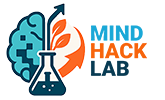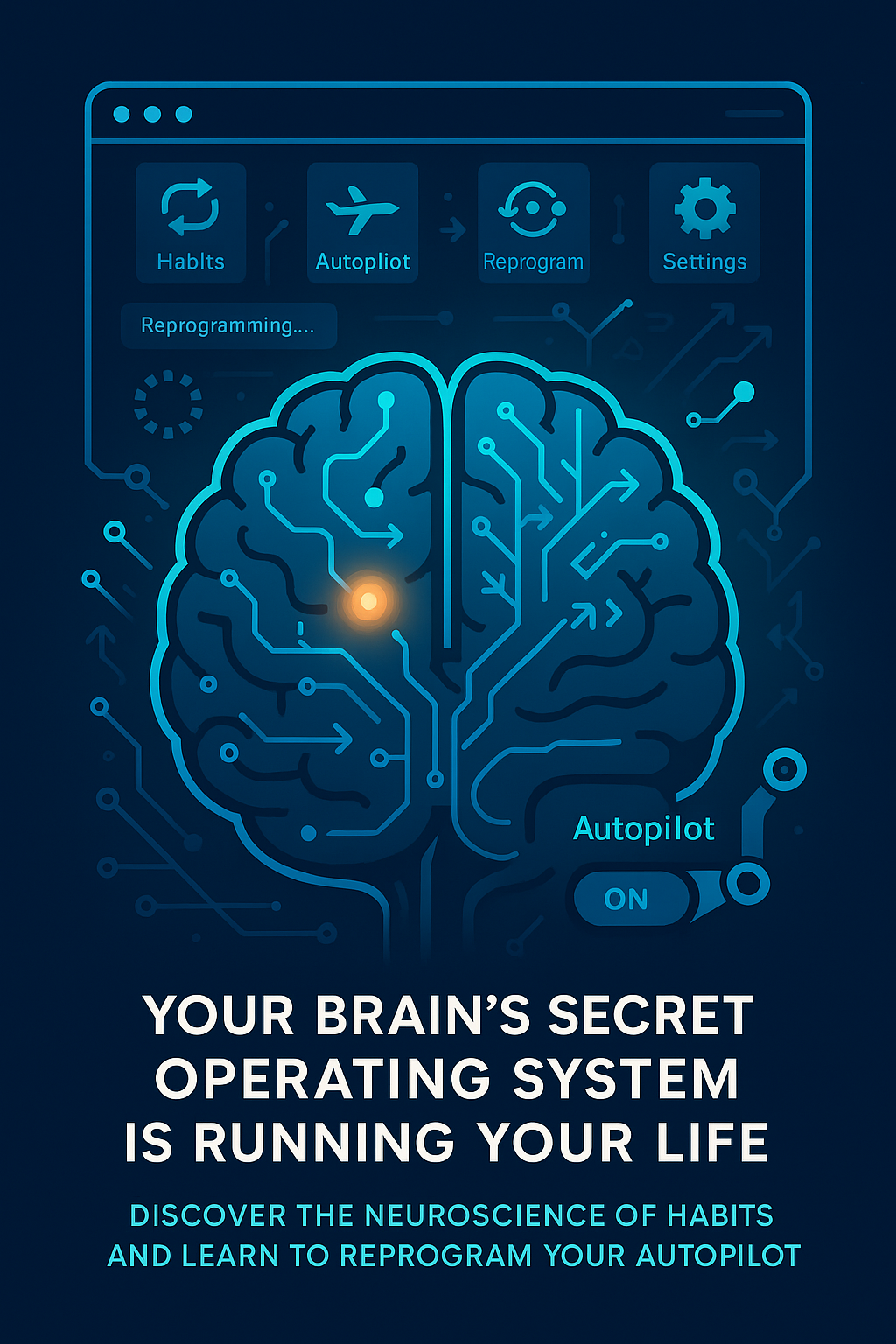Bad Habits
The 40% Solution: Why Nearly Half Your Day Runs on Autopilot (And How to Hack It)
Your Brain's Secret Operating System Is Running Your Life
━━━━━━━━━━━━━━━━━━━━━━━━━━━━
Discover the neuroscience of habits and learn to reprogram your autopilot
━━━━━━━━━━━━━━━━━━━━━━━━━━━━
Sarah stared at her phone screen, thumb scrolling mindlessly through social media. Again. It was 11:23 AM, and she'd already checked Instagram six times since breakfast. "Why do I keep doing this?" she wondered, tossing her phone aside in frustration. Ten minutes later, without thinking, she picked it up again.
Sound familiar? Here's why: Studies show that about 40 percent of people's daily activities are performed each day in almost the same situations. According to USC's Wendy Wood, about 43 percent of what people do every day is repeated in the same context, usually while they are thinking about something else.
🧠 Your Brain's Efficiency Engine
That 40-43% statistic isn't a flaw—it's a feature. Your brain evolved to automate repetitive tasks because conscious decision-making is exhausting. Every time you tie your shoes, brush your teeth, or drive to work, you're benefiting from this efficiency system.
"Your basal ganglia—the brain's habit headquarters—can run complex behavioral sequences while your conscious mind focuses on more important things."
According to Nature Reviews Neuroscience, the basal ganglia consist of separate circuits that serve distinct functions, with habits fundamentally being associations between stimuli and responses, or S-R associations.
The problem? This same system that helps you navigate your morning routine also drives you to check your phone 96 times a day, stress-eat when anxious, or snap at your kids after a long workday.
💡 Quick Brain Fact: "Fully acquired habits are performed almost automatically, virtually non-consciously, allowing attention to be focused elsewhere." - Graybiel (2008)
⚡ The Hidden Cost of Autopilot Living
When 40% of your day runs unconsciously, small negative patterns compound into major life impacts:
📱 Digital Drain: Average phone checking = 4 hours daily
🍔 Mindless Munching: Habitual snacking = 500+ extra calories
😤 Reactive Responses: Automatic irritability = damaged relationships
Wendy Wood draws on three decades of original research to explain the fascinating science of how we form habits. Most people try changing the 60% of conscious decisions while ignoring the 40% running in the background. It's like steering a boat while the autopilot pulls you off course.
🔬 The Neuroscience of Change
Traditional advice says "just use willpower"—but neuroscience shows why that fails. We do them automatically. We do them by habit. And yet, whenever we want to change something about ourselves, we rely on willpower.
According to researchers, habits correspond with reliance on different parts of the basal ganglia: the dorsomedial rodent striatum (homologous to the primate anterior caudate nucleus), and the dorsolateral striatum (homologous to the primate posterior putamen).
The solution isn't fighting your autopilot—it's reprogramming it.
Recent studies reveal habits follow a three-part loop:
- Cue (trigger)
- Routine (behavior)
- Reward (benefit)
Change any element, and the entire habit shifts.
━━━━━━━━━━━━━━━━━━━━━━━━━━━━
Before/After: Reprogramming Your Morning
😰 Before:
Phone alarm →
Immediate scrolling →
Anxiety spike ⚡
30-min intervention
😌 After: Phone alarm
→ 5 deep breaths
→ Calm energy
🎯 Your 40% Advantage
What if that 40% became your secret weapon? Imagine if nearly half your day automatically moved you toward your goals.
Three game-changing shifts happen when you optimize your autopilot:
1. Energy Liberation When positive habits run automatically, you free up mental energy for creativity and growth. Same journey, fraction of the fuel.
2. Compound Returns According to James Clear's Atomic Habits, if you get 1 percent better each day for one year, you'll end up thirty-seven times better by the time you're done. Because that 40% repeats daily, small optimizations create massive life changes.
3. Identity Evolution We become what we repeatedly do. When 40% of your actions align with who you want to be, transformation becomes inevitable.
🚫 Common Autopilot Mistakes
"I'll just try harder tomorrow" Habits are a learning mechanism. All we have to do is repeat something and get rewarded for it, and we're learning a habit. Willpower is finite. Your basal ganglia are infinite.
"I need to eliminate all bad habits" Wrong focus. Replace them with better alternatives. According to Wood, there are three main principles to consider when effectively changing habitual behavior, including disrupting old cues and creating new ones.
"This sounds like months of work" Research shows meaningful habit shifts can begin in single focused sessions. Studies have shown it can take anywhere from 15 days to 254 days to truly form a new habit.
━━━━━━━━━━━━━━━━━━━━━━━━━━━━
FAQ: Quick Answers
Q: Can I really change habits that quickly? A: Neuroscience shows new neural pathways form immediately. The development of motor skill automaticity is a gradual process via which control is passed from the subcortical procedural-learning systems to purely cortical networks.
Q: What if I've tried before and failed? A: You were probably fighting your biology instead of working with it. Understanding the 40% changes everything.
Q: Is this just another productivity hack? A: No—it's about aligning your automatic behaviors with your authentic values and goals. ━━━━━━━━━━━━━━━━━━━━━━━━━━━━
✅ Your Next Move
The 40% of your life running on autopilot isn't going away. The question is: will it work for you or against you?
Modern behavioral science has cracked the code on rapid habit transformation. Through targeted interventions combining CBT, ACT, and motivational interviewing techniques, you can begin reprogramming your autopilot in as little as 30 minutes.
━━━━━━━━━━━━━━━━━━━━━━━━━━━━
In 30 minutes, you could:
✓ Map your personal habit loops ✓ Design evidence-based replacements ✓ Start your autopilot upgrade
Start Your Session - Learn More
━━━━━━━━━━━━━━━━━━━━━━━━━━━━
Because here's the truth: You're not broken. You're not weak. You're running outdated software. And unlike your phone, your brain's operating system can be upgraded anytime you choose.
The only question is: what will you do with your 40%?
Sources:
- Wood, W., Quinn, J. M., & Kashy, D. (2002). Habits in everyday life. Journal of Personality and Social Psychology.
- Yin, H. H., & Knowlton, B. J. (2006). The role of the basal ganglia in habit formation. Nature Reviews Neuroscience.
- Graybiel, A. (2008). Habits, rituals, and the evaluative brain. Annual Review of Neuroscience.
- Clear, J. (2018). Atomic Habits. Avery Publishing.
- Science Daily (2014). How we form habits, change existing ones.







